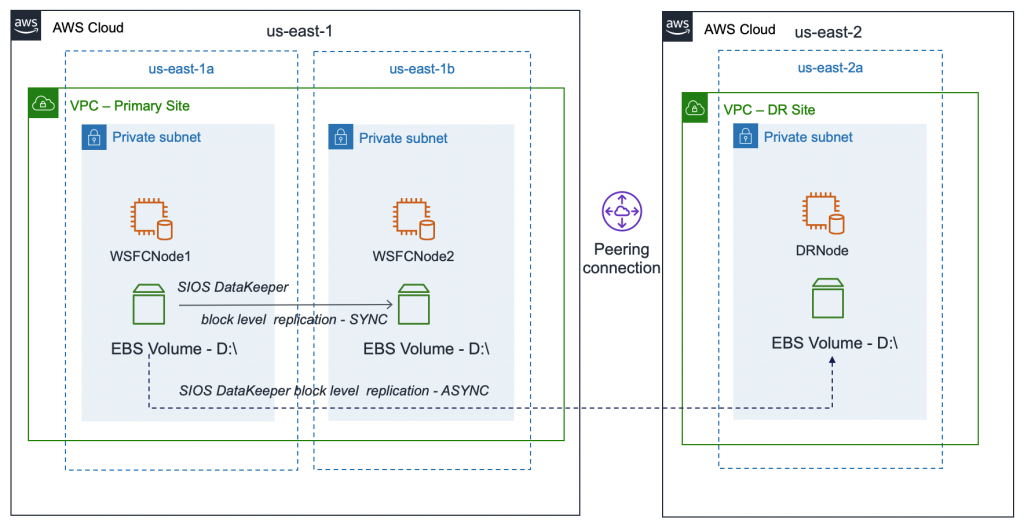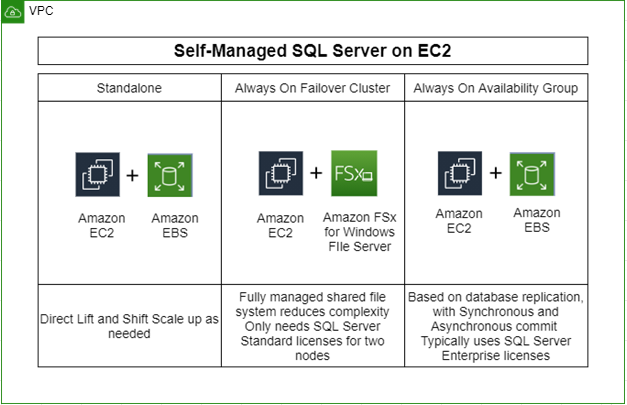AWS Architecture Blog
Category: Amazon EC2
Disaster Recovery (DR) for a Third-party Interactive Voice Response on AWS
Voice calling systems are prevalent and necessary to many businesses today. They are usually designed to provide a 24×7 helpline support across multiple domains and use cases. Reliability and availability of such systems are important for a good customer experience. The thoughtful design of a cost-optimized solution will allow your business to sustain the system […]
Field Notes: Automate Disaster Recovery for AWS Workloads with Druva
This post was co-written by Akshay Panchmukh, Product Manager, Druva and Girish Chanchlani, Sr Partner Solutions Architect, AWS. The Uptime Institute’s Annual Outage Analysis 2021 report estimated that 40% of outages or service interruptions in businesses cost between $100,000 and $1 million, while about 17% cost more than $1 million. To guard against this, it […]
Scaling Data Analytics Containers with Event-based Lambda Functions
The marketing industry collects and uses data from various stages of the customer journey. When they analyze this data, they establish metrics and develop actionable insights that are then used to invest in customers and generate revenue. If you’re a data scientist or developer in the marketing industry, you likely often use containers for services […]
How IPONWEB Adopted Spot Instances to Run their Real-time Bidding Workloads
IPONWEB is a global leader that builds programmatic, real-time advertising technology and infrastructure for some of the world’s biggest digital media buyers and sellers. The core of IPONWEB’s business is Real-time Bidding (RTB). IPONWEB’s platform processes, transmits, and auctions huge volumes of bid requests and bid responses in real time. They are then able to determine […]
Field Notes: Implementing HA and DR for Microsoft SQL Server using Always On Failover Cluster Instance and SIOS DataKeeper
This blog post was co-written by Sudhir Amin, Sr. Solution Architect, AWS, and David Bermingham, Senior Technical Evangelist, SIOS Technology, Inc. To ensure high availability (HA) of Microsoft SQL Server in Amazon Elastic Compute Cloud (Amazon EC2), there are two options: Always On Failover Cluster Instance (FCI) and Always On availability groups. With a wide […]
Insights for CTOs: Part 1 – Building and Operating Cloud Applications
In my role as a Senior Solutions Architect, I have spoken to chief technology officers (CTOs) and executive leadership of large enterprises like big banks, software as a service (SaaS) businesses, mid-sized enterprises, and startups. In this series, I share insights gained from various CTOs and engineering leaders during their cloud adoption journeys at their […]
Overview of Data Transfer Costs for Common Architectures
Data transfer charges are often overlooked while architecting a solution in AWS. Considering data transfer charges while making architectural decisions can help save costs. This blog post will help identify potential data transfer charges you may encounter while operating your workload on AWS. Service charges are out of scope for this blog, but should be […]
Field Notes: SQL Server Deployment Options on AWS Using Amazon EC2
Many enterprise applications run Microsoft SQL Server as their backend relational database. There are various options for customers to benefit from deploying their SQL Server on AWS. This blog will help you choose the right architecture for your SQL Server Deployment with high availability options, using Amazon EC2 for mission-critical applications. SQL Server on Amazon […]
Field Notes: Benchmarking Performance of the New M5zn, D3, and R5b Instance Types with Datadog
This post was co-written with Danton Rodriguez, Product Manager at Datadog. At re:Invent 2020, AWS announced the new Amazon Elastic Compute Cloud (Amazon EC2) M5zn, D3, and R5b instance types. These instances are built on top of the AWS Nitro System, a collection of AWS-designed hardware and software innovations that enable the delivery of private networking, […]
Designing a Successful Pilot Phase for Your Cloud Migration
Pilot phases, or pilots, as we will call them from now on, should be conducted to test and find the positive and negative aspects of a particular use case, design pattern, or application migration approach. They allow you to validate the foundation of your architecture (for example, with a landing zone governed by AWS Control […]









